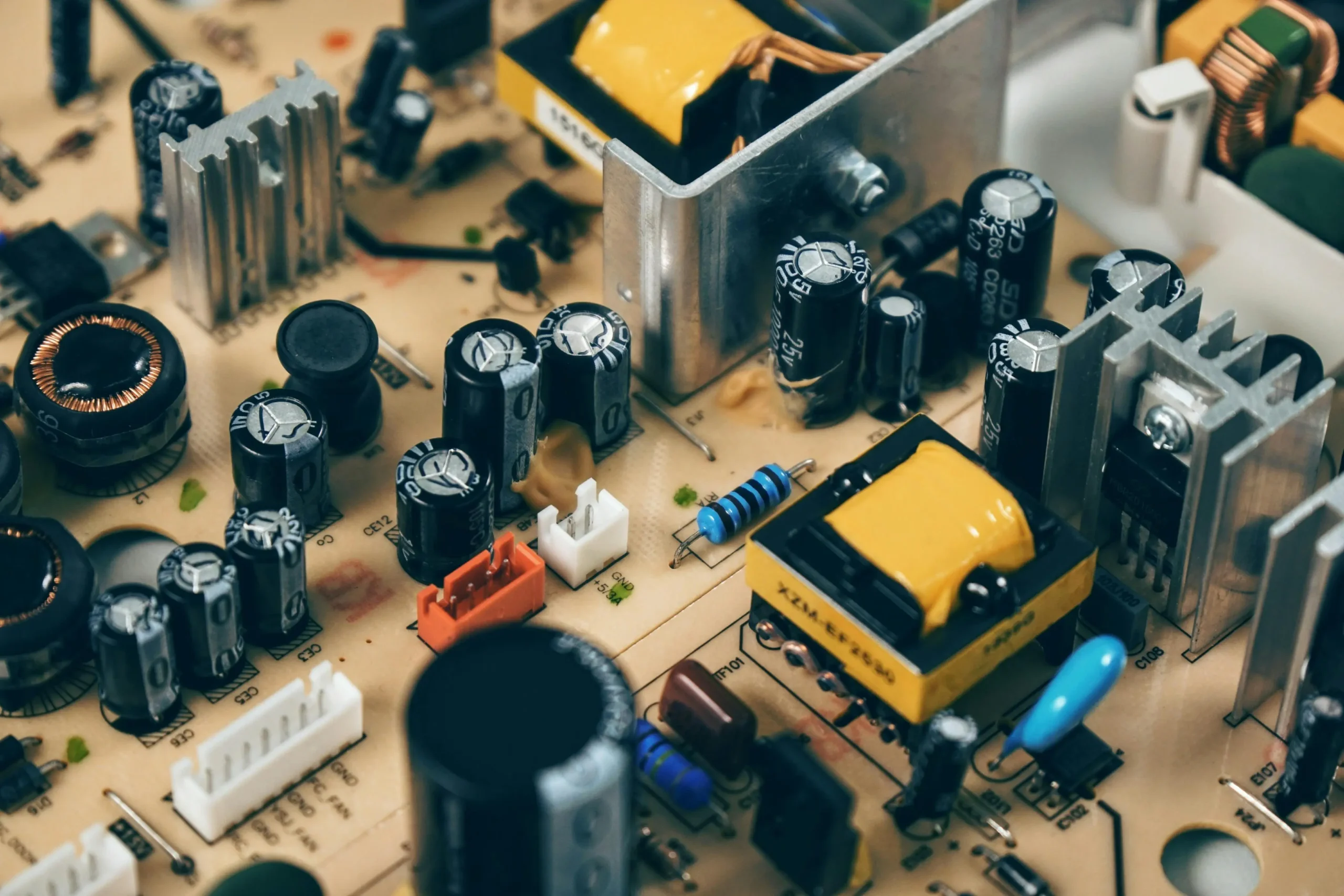Capacitors
When was the last time you stopped to think about what keeps your favorite gadgets running smoothly? Whether it’s your smartphone lighting up instantly, your laptop booting without a hitch, or your home appliances working flawlessly, there’s one unsung hero quietly doing its job behind the scenes: the capacitor.
Capacitors might be tiny components tucked inside your electronics, but their role is massive. If you’ve ever been frustrated by a flickering screen, a device that won’t power on, or unstable performance, understanding capacitors will give you insights to solve these problems — and even help you make smarter buying choices when sourcing electrical components. So, let’s dive deep and unravel how capacitors function in modern circuits and why they matter so much to your tech life.
Table of Contents
What Are Capacitors? A Simple Definition with Real-World Examples
Understanding the Basics of Capacitors
You can think of a capacitor as a miniature energy reservoir within your electronic device. It temporarily stores electrical energy and releases it exactly when the circuit needs it. Imagine a water tank in your home plumbing system — when the tap opens, water flows smoothly because the tank helps manage pressure and supply. Similarly, capacitors help manage the flow of electricity, ensuring that circuits work steadily and reliably.
Technically, a capacitor is a passive electronic component made of two conductive plates separated by an insulating material called the dielectric. When voltage is applied, these plates accumulate opposite charges, storing energy that can be discharged later.
Common Types of Capacitors
There are various kinds of capacitors, each tailored to specific uses. Here are the most common you’ll encounter:
- Ceramic Capacitors: Small, cheap, and used for high-frequency circuits like signal filtering.
- Electrolytic Capacitors: Larger, polarized capacitors with high capacitance, common in power supply filtering.
- Tantalum Capacitors: Compact with stable capacitance, often found in mobile devices.
- Film Capacitors: Durable and reliable, ideal for audio and high-frequency applications.
- Supercapacitors: Huge capacitance values, used in energy storage and backup power.
| Type | Capacitance Range | Common Use Case | Cost | Lifespan |
|---|---|---|---|---|
| Ceramic | 1pF – 1μF | Decoupling, filtering | Low | Long |
| Electrolytic | 1μF – 1000μF | Power supplies | Medium | Medium |
| Tantalum | 1μF – 470μF | Space-limited devices | Higher | Long |
| Film | 1nF – 10μF | Audio, high-frequency | High | Very Long |
| Supercapacitor | >1F | Backup power | Expensive | Long |
How Do Capacitors Work in Modern Circuits?
The Role of Capacitance
Capacitance is a measure of a capacitor’s ability to store charge, defined in Farads (F). You’ll often see capacitors rated in microfarads (μF) or picofarads (pF), indicating their storage capacity.
The basic formula you might come across is:
C = Q / V
where C is capacitance, Q is the stored charge, and V is voltage.
This relationship means the capacitor holds a charge proportional to the voltage across it.
Applications in Electronic Circuits
Capacitors serve multiple critical roles in circuits you use daily:
- Power Supply Stabilization: They smooth out sudden voltage changes, preventing damage or instability in devices like laptops or TVs.
- Timing Circuits: Capacitors work with resistors to create precise timing intervals in clocks, oscillators, and timers.
- Signal Filtering: By blocking direct current (DC) and allowing alternating current (AC) to pass, capacitors help filter noise from audio and radio signals.
- Energy Storage: In devices like digital watches or memory modules, capacitors supply backup power during brief outages.
- Coupling and Decoupling: They allow signals to pass between different stages of a circuit while isolating DC bias voltages.
| Application | Capacitor Function | Example Device |
|---|---|---|
| Power Regulation | Voltage smoothing | Laptop motherboard |
| Audio Filtering | Signal cleanup | Amplifiers, radios |
| Memory Backup | Energy storage | Digital watches |
| Flash Photography | Quick energy discharge | DSLR Cameras |
Why Are Capacitors Crucial in Today’s Electronics?
Managing Power Demands in High-Speed Devices
Your smartphone or laptop needs steady power to operate at peak performance. Capacitors act as buffers, ensuring power delivery remains consistent despite fluctuations in battery output or external power sources.
Supporting Energy Efficiency
By stabilizing voltage and reducing electrical noise, capacitors help lower energy loss and heat generation. This efficiency is vital in smart grids, renewable energy systems, and energy-conscious gadgets.
Safety and Surge Protection
Capacitors protect sensitive microchips and integrated circuits by absorbing spikes or surges in electrical current, which might otherwise damage your devices.
Enhancing Device Lifespan
Stable power flow reduces stress on electronic components, helping prevent premature failures and extending the life of your tech investments.
Choosing the Right Capacitor: A Buyer’s Guide
Key Specifications to Consider
When picking capacitors for your projects or repairs, keep these specifications in mind:
- Capacitance (Farads): Make sure it matches circuit requirements.
- Voltage Rating: Should exceed the maximum voltage the circuit will experience.
- ESR (Equivalent Series Resistance): Lower ESR means better performance in high-frequency applications.
- Tolerance: Acceptable variance from nominal capacitance value.
- Physical Size: Must fit within your device’s layout.
Tips for Buying on AliExpress
AliExpress is a popular source for capacitors, but you need to be savvy:
- Check seller ratings and reviews to avoid counterfeit parts.
- Look for RoHS or CE certification to ensure quality.
- Stick with sellers who offer detailed datasheets and product descriptions.
Top-Selling Capacitors on AliExpress in 2025
- 1000μF Electrolytic Capacitor — Ideal for power supply repairs.
- 10μF Ceramic Capacitor Assortment Kit — Great for beginners and hobbyists.
- 5.5V 1F Supercapacitor — Perfect for backup power projects.
Testing and Troubleshooting Capacitors
How to Test a Capacitor with a Multimeter
You don’t need a fancy lab setup to check if a capacitor is functioning:
- Discharge the capacitor fully to avoid shocks.
- Set your multimeter to capacitance mode.
- Connect the leads to the capacitor terminals.
- Compare the reading to the capacitor’s rated value.
If the reading is far off or shows zero, the capacitor is likely faulty.
Common Signs of Capacitor Failure
- Bulging or leaking casing
- Device flickering or failure to power on
- Unusual noises or heating near the capacitor
Replacing a bad capacitor often fixes these issues immediately.
Future of Capacitor Technology in Smart Devices
Miniaturization & Nanotechnology
Capacitors are getting smaller but more powerful. Advances in materials science allow these components to fit inside wearables and ultra-compact devices without sacrificing performance.
Supercapacitors in EVs and Solar Power
Supercapacitors enable rapid charging and discharging, making them ideal for electric vehicles and energy storage in solar grids.
Trends in AI & IoT Devices
As AI and Internet of Things (IoT) devices multiply, capacitors play a key role in ensuring efficient power management for these always-on, low-latency systems.
FAQs About Capacitors in Modern Circuits
What is the main function of a capacitor in a circuit?
A capacitor stores and releases electrical energy, helping stabilize voltage and filter out unwanted noise to keep your devices running smoothly.
How do I choose the right capacitor for my circuit?
Consider the required capacitance, voltage rating, ESR, tolerance, and size. Always check the circuit’s design specs to match these parameters.
Can a bad capacitor damage other components?
Yes, a faulty capacitor can cause voltage spikes or power drops, potentially damaging integrated circuits or other sensitive parts.
Are supercapacitors better than regular capacitors?
Supercapacitors offer much higher energy storage but are bulkier and more expensive. They’re great for specific applications like backup power but not always suited for general circuit use.
Conclusion: The Small Component That Makes a Big Difference
Now that you understand how capacitors function and why they’re vital, you can appreciate their role every time you power up a device. From buffering power to smoothing signals, capacitors quietly support the modern electronics that shape your life.


